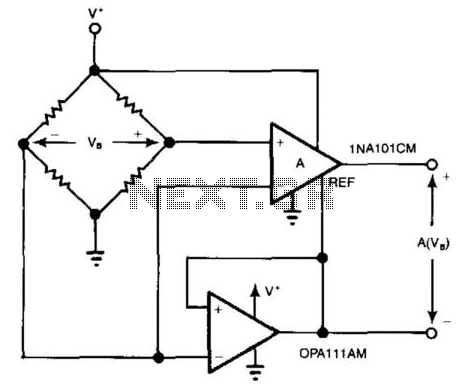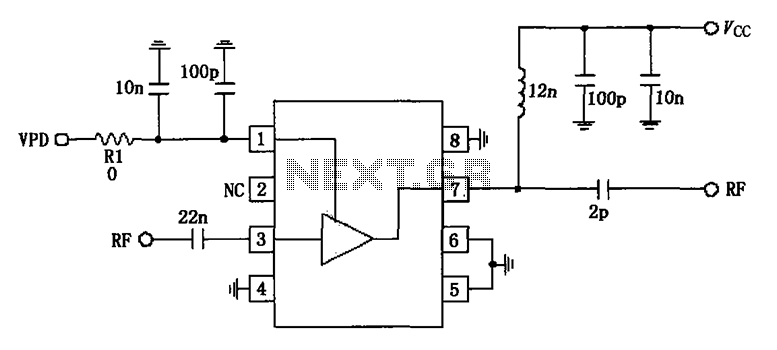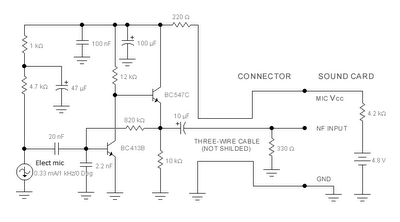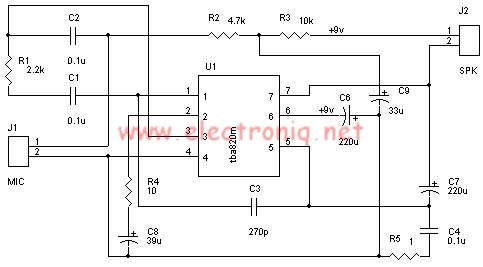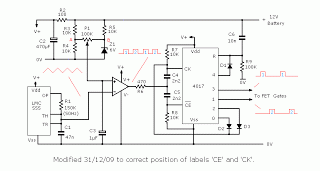
Four gas monitor circuit diagram
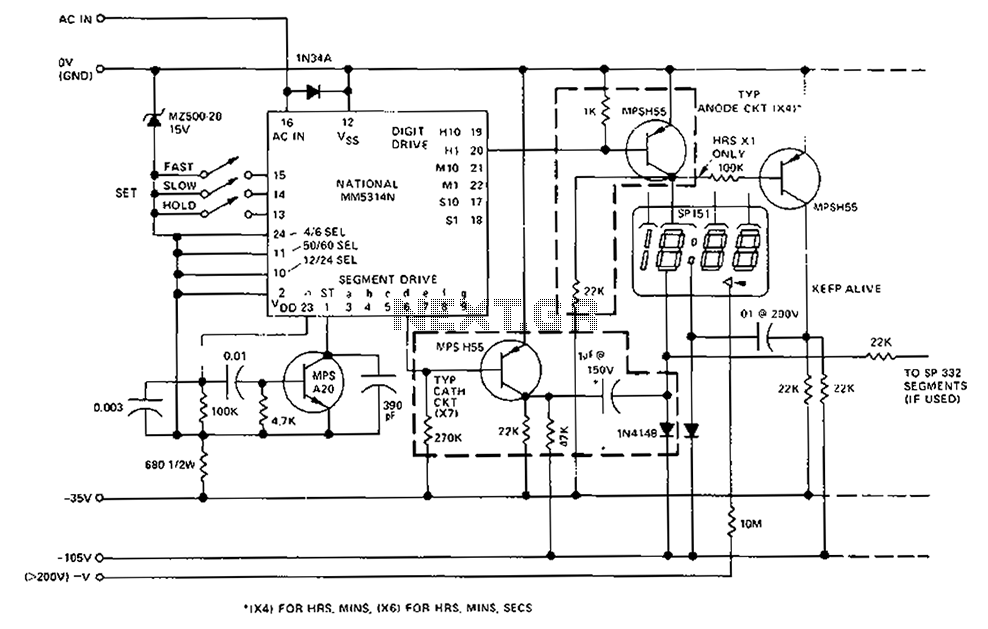
A CMOS clock circuit is capable of driving a multi-digit gas discharge display. This simple circuit does not include an alarm feature but allows for a flashing colon to indicate morning and afternoon. The circuit requires seven drive circuits and a digital driver circuit, even though only two of these circuits are used for display purposes. If there is a need to display seconds, an additional drive circuit will be necessary.
The CMOS clock circuit operates using complementary metal-oxide-semiconductor technology, which is known for its low power consumption and high noise immunity. The design includes a multi-digit gas discharge display, where each digit is illuminated by gas discharge, providing a bright and clear visual output.
The circuit's simplicity lies in its ability to manage the display without complex components or features. The flashing colon serves as a visual indicator for AM and PM, enhancing the functionality of the clock without the need for an alarm system.
In terms of the driving circuits, seven are required to properly manage the display, with the digital driver circuit playing a crucial role in controlling the operation of the gas discharge display. Although only two circuits are actively used for displaying the time, the additional circuits are essential for ensuring that the display operates correctly and can handle the necessary voltage and current levels.
For applications requiring the display of seconds, an extra drive circuit is mandated. This additional circuit allows for the integration of a second display or the enhancement of the existing display to show seconds alongside hours and minutes.
Overall, the CMOS clock circuit is an effective solution for timekeeping applications that require a simple yet functional display system. Its design ensures reliability and ease of implementation, making it suitable for various electronic projects. CMOS clock circuit can drive a multi-digit gas discharge display, simple circuit does not include an alarm, which can be flashing colon morning and afternoon show. The circuit need to use seven drive circuits and digital driver circuit, although only display two circuits among a. If you want to display seconds, then you will also need an additional drive.
The CMOS clock circuit operates using complementary metal-oxide-semiconductor technology, which is known for its low power consumption and high noise immunity. The design includes a multi-digit gas discharge display, where each digit is illuminated by gas discharge, providing a bright and clear visual output.
The circuit's simplicity lies in its ability to manage the display without complex components or features. The flashing colon serves as a visual indicator for AM and PM, enhancing the functionality of the clock without the need for an alarm system.
In terms of the driving circuits, seven are required to properly manage the display, with the digital driver circuit playing a crucial role in controlling the operation of the gas discharge display. Although only two circuits are actively used for displaying the time, the additional circuits are essential for ensuring that the display operates correctly and can handle the necessary voltage and current levels.
For applications requiring the display of seconds, an extra drive circuit is mandated. This additional circuit allows for the integration of a second display or the enhancement of the existing display to show seconds alongside hours and minutes.
Overall, the CMOS clock circuit is an effective solution for timekeeping applications that require a simple yet functional display system. Its design ensures reliability and ease of implementation, making it suitable for various electronic projects. CMOS clock circuit can drive a multi-digit gas discharge display, simple circuit does not include an alarm, which can be flashing colon morning and afternoon show. The circuit need to use seven drive circuits and digital driver circuit, although only display two circuits among a. If you want to display seconds, then you will also need an additional drive.
